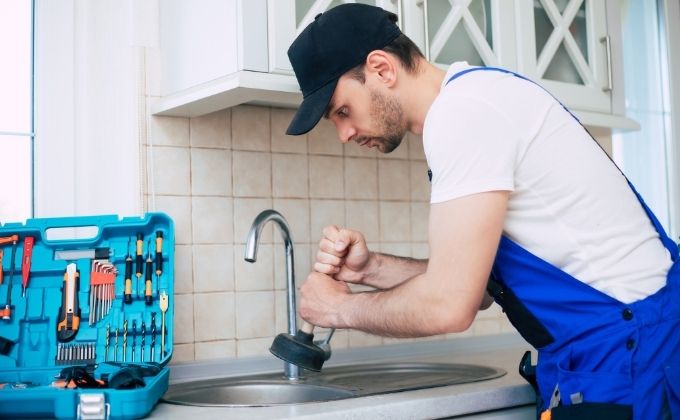Minimalist living is more than just owning fewer things—it’s about creating space for what truly matters. For many people, the journey starts with decluttering, yet it often comes with questions and uncertainties. How much is too much to let go? What if I regret giving something away? Where do I even begin? These are common concerns, and understanding how to get answers about minimalist living and decluttering can turn overwhelming doubts into practical steps.
Why Minimalism Appeals to So Many
In a world that often celebrates consumerism, minimalism offers a refreshing alternative. People are drawn to the idea of simplifying their lives, reducing stress, and focusing on experiences rather than possessions. When someone asks how to get answers about this lifestyle, the most important point to realize is that minimalism is flexible. It doesn’t have to look like bare walls and empty rooms; instead, it’s about intentional choices. For one person, that might mean owning just a few outfits they love, while for another it’s about clearing digital clutter.
The Connection Between Decluttering and Mental Clarity
Clutter doesn’t just take up physical space—it can weigh heavily on the mind. Many people describe feeling lighter and more at peace after decluttering. The question of how to get answers here often comes from understanding that physical clutter mirrors mental clutter. Every item demands attention, even if unconsciously, and letting go creates breathing room. Minimalist living encourages us to focus only on items that add value to our lives, which in turn reduces stress and anxiety.
Asking the Right Questions During Decluttering
The process of decluttering can feel overwhelming until you know what to ask yourself. Do I use this regularly? Does this item truly serve a purpose or bring me joy? Am I holding onto it out of guilt or habit? This reflective approach shows how to get answers that are deeply personal rather than dictated by a one-size-fits-all rule. In minimalist living, your home should reflect your priorities, not just trends.
How Minimalism Differs from Just Organizing
It’s easy to mistake minimalism for simply being organized. However, organizing is about finding better ways to store things, while minimalism is about reducing the amount of things to begin with. When people wonder how to get answers about the difference, the key lies in intention. Minimalism asks why you have something, not just where you should put it. A tidy space filled with unnecessary items might look neat, but it won’t bring the same sense of freedom that true minimalism does.
Practical Tips to Begin the Journey
Many people hesitate to begin because they don’t know where to start. Understanding how to get answers often involves experimenting. Start with a single drawer, a closet, or even just your digital files. Focus on one category at a time instead of an entire room. Minimalist living doesn’t demand overnight transformation; it’s a gradual shift. The more you practice letting go, the easier it becomes to release things that no longer serve you.
Overcoming Emotional Attachments
One of the biggest challenges in decluttering is dealing with sentimental items. It’s not easy to part with gifts, heirlooms, or reminders of past experiences. When searching for how to get answers in this area, consider balance. Keeping a few meaningful items is natural, but you don’t need to hold onto everything to preserve memories. Photos, letters, or even digitized keepsakes can capture the sentiment without overwhelming your living space. Minimalism teaches that your identity and memories aren’t tied to possessions.
The Benefits of Less
People often focus on what they’re losing when they think of minimalism, but the truth is that they gain much more. More space, more time, and more freedom to focus on what matters. Learning how to get answers about minimalist living also means recognizing these hidden rewards. With fewer things to clean, maintain, or worry about, you create time for experiences, relationships, and self-care. Many who embrace minimalism find that they spend less money, travel lighter, and feel more in control of their daily lives.
Avoiding the Trap of Perfection
Minimalist living is often portrayed online as a perfect white room with sleek furniture and no visible belongings. In reality, that image doesn’t fit everyone’s lifestyle. When figuring out how to get answers, it’s important to avoid comparing yourself to unrealistic standards. Minimalism is not about deprivation or aesthetics alone; it’s about intentional living. Your version of minimalism might still include a collection of books, plants, or art pieces because those are things you truly value.
Building Habits to Maintain Simplicity
Decluttering once is powerful, but maintaining a minimalist lifestyle requires habits. A common question is how to get answers about staying clutter-free long term. The key lies in being mindful about what comes into your space. Before buying something new, ask yourself if it adds value or simply adds to clutter. Regularly review your belongings, and don’t be afraid to let go of items as your needs change. Minimalist living isn’t a one-time event—it’s an ongoing practice of awareness and choice.
Seeking Community and Support
Sometimes the best way to learn how to get answers is through community. Online forums, minimalist blogs, and social media groups offer encouragement and practical advice. Hearing stories from others on the same journey can provide motivation and remind you that you’re not alone. Minimalist living can feel like a radical shift in a culture of excess, but finding like-minded people makes the transition easier and more enjoyable.
Conclusion: Clarity Through Simplicity
Minimalist living and decluttering aren’t about rigid rules—they’re about freedom. When you learn how to get answers by asking the right questions and trusting your instincts, you create a home and life that reflect your values. The journey may be challenging, but the result is worth it: a simpler, calmer, and more intentional way of living. By focusing less on things and more on experiences, you open up space not just in your home, but in your mind and heart.


